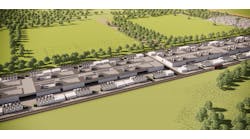Energy efficiency and combined heat and power could be big winners when the Obama administration releases its first-ever carbon dioxide rules from existing power plants.
The Environmental Protection Agency is expected on June 2 to propose the carbon pollution restrictions under Section 111(d) of the Clean Air Act.
The rules will require that states create plans to meet the carbon goals. The states may end up relying heavily on energy efficiency, CHP and other forms of green energy, if the federal rules allow enough flexibility.
Gina McCarthy, EPA administrator is scheduled to release the carbon rule at 10:30, Monday, June 2. Follow @EfficiencyMkts on twitter for details.
Much depends on the approach the EPA takes. The administration is reportedly considering a systems approach being pushed by groups like the American Council for an Energy-Efficient Economy, the Alliance to Save Energy and the Natural Resources Defense Council. This would mean moving beyond just addressing the smoke coming out of the stack to reduce carbon emissions – employing energy efficiency and CHP, for example.
The World Resources Institute recently examined 10 diverse states to see how easily states can comply with the rules, if they are allowed this kind of flexibility. It found that most states can achieve moderate to ambitious carbon reductions by just using their existing infrastructure and policies.
The organization examined Ohio, Michigan, North Carolina, Pennsylvania, Illinois, Colorado, Wisconsin, Minnesota, Tennessee and Arkansas.
Ohio has set a standard to reduce energy use 22 percent by 2025. Just by meeting that standardOhio will reduce its carbon emissions by 10 percent below 2011 levels in 2020, according to the analysis. And if Ohio realizes its full CHP potential, it can lop off another 3 percent of carbon emissions. Ohio is now using only 5 percent of its 9.8 GW of technical potential for CHP, says the WRI.
By meeting its efficiency standard, Pennsylvania could reduce carbon emissions by 11 percent. Add another 3 percent if it increases its use of CHP by 26 percent. Wisconsin can achieve carbon reductions of 20 percent – 9 percent of that just by continuing its current energy savings program and another 11 percent by ramping up CHP by 60 percent.
So the June 2 EPA announcement could mark the start of an uptick in energy efficiency markets. None of this will happen terribly quickly though. The EPA will propose the rule and it will be another year before its finalized, and more time after that before states work out their plans.
WRI’s state analysis is here.
What’s your take on the EPA’s carbon policy? Join the discussion on Energy Efficiency Markets’ LinkedIn Group.






